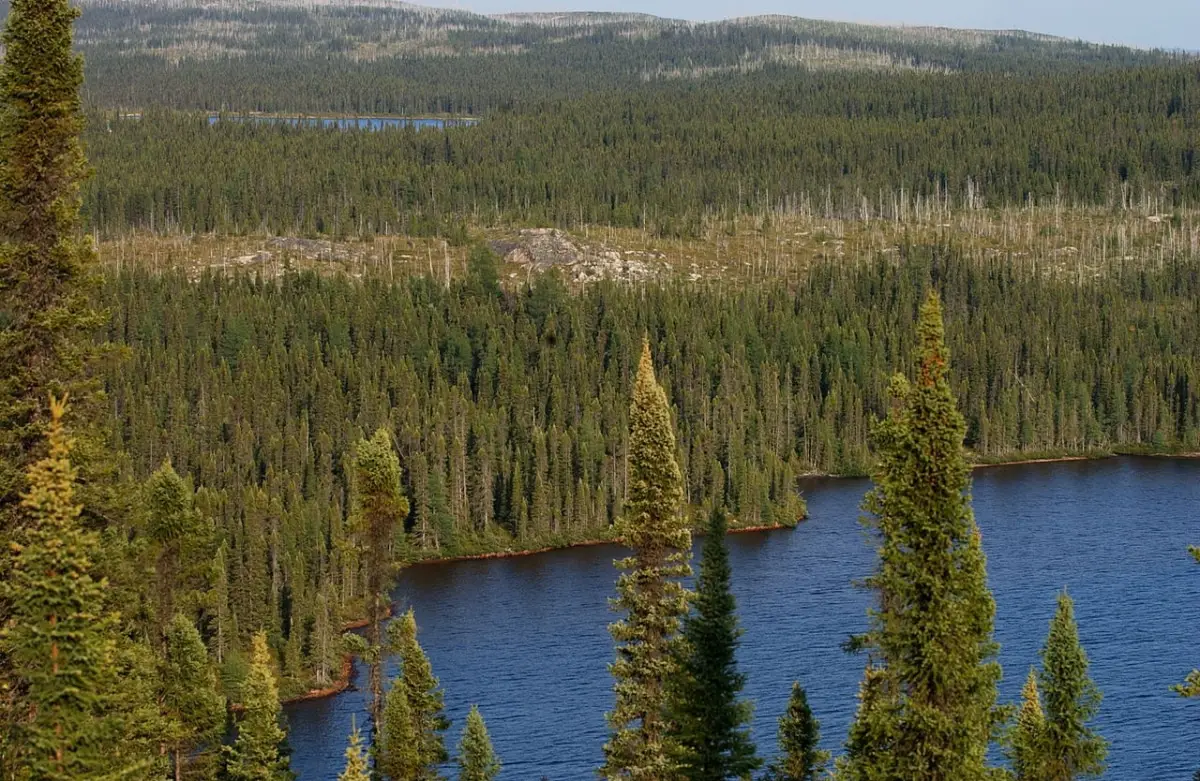
Image – Wikimedia Commons / Canadian Taiga
For there to be life, it is important that the climate is not too harsh. For this reason, when they talk to us about the polar regions or the high mountains, it is easy to imagine places that, wherever you look, have no or very few plants. But what would you say to me if I told you that there are some species adapted to these conditions?
The problem is that, when they want to grow in temperate regions, they can be quite demanding since If there is something that plants fear more than anything for polar climates, it is high temperatures.
What are the characteristics of the polar climate?
The polar climate is one in which it is necessary to be well protected with a coat, hat, gloves, scarf … Not just any human being can live there. But it is that even the few animals that live in these regions, such as the polar bear or the penguin of Antarctica, must fight against the extreme cold if they want to survive.
Plants, not being able to move, have it much more difficult. Because, the higher the latitude, the less flora you see, because the solar radiation that arrives is minimal. As a consequence, temperatures are low: in some regions, the highest temperature is only 8ºC, while the lowest is -50ºC. In Antarctica it dropped even more: -93ºC on August 2, 10.
It is subdivided into three types:
- Tundra climate: the highest temperature is between 0 and 10ºC.
- Icy weather: the highest temperature is less than 0ºC.
- High mountain climate: it can be alpine climate, whose average monthly temperature does not exceed 10ºC; or icy weather where it never rises above 0º.
What are the plants that live in places with a polar climate?
In places where the climate is so cold and harsh, the vast majority of plants are nothing more than herbs, such as ferns, and the few trees that survive are almost always evergreen conifers, such as the following:
Siberian fir (Abies sibirica)
The Siberian fir is an evergreen conifer that reaches a height of between 30 and 35 meters. It develops a trunk up to 1 meter in diameter, which grows almost straight. In addition, and as a curious fact, it can live up to 200 years, something incredible considering that it lives in areas where temperatures are cold all year round.
Douglas for (Pseudotsuga menziesii)
El Douglas fir or Oregon pine is an evergreen conifer that reaches a height of between 60 and 75 metersand that develops a trunk of up to 2 meters in diameter. Although it is called “fir” or “pine”, it is actually a Pseudotsuga (pseudo = false and tsuga, referring to the coniferous genus Tsuga).
Gmelin’s larch (Larch gmelinii)
It is a deciduous conifer with a pyramidal shape that can reach a height of up to 40 metersbut the normal thing is that it does not exceed 30 meters. It has a straight trunk which is about 40 centimeters thick when mature.
Heather (calluna vulgaris)
La heather, heather or calluna is a small evergreen bush that grows between 20 and 50 centimeters tall. It has brown branches, and very, very small, green leaves with pink flowers. These are grouped in a terminal cluster; that is, after they wither, that whole stem will die.
Edelweiss (Leontopodium alpinum)
La edelweiss or snow flower is one of the few herbs with flowers that we can find in the high mountains. Does not exceed 10 centimeters in heightbut its white flowers composed of 5 petals are so beautiful and delicate that it is a protected species in many places, such as in Spain.
Norway spruce (Picea abies)
Norway spruce o common spruce It is an evergreen conifer reaches a height of between 30 and 50 meterswith a trunk diameter of up to 1,5 meters. It has a pyramidal crown, formed by small, green, acicular leaves. The cones are very decorative, being first reddish and then lilac.
Black spruce or black fir (The Marian spade)
It is an evergreen conifer normally a tree up to 15 meters high is madebut it can also grow as a 5 meter bush. This depends on the climate, but also on whether it has enough space to develop normally, and whether its seed has germinated while surrounded by other large plants. The cones are dark lilac when they are still tender, and brown when they finish maturing.
Creeping willowsalix repens)
The creeping willow is an evergreen shrub with creeping branches, which can measure up to 1 meter in height. The leaves are small, 2 x 1,5 centimeters, so you don’t have to spend as much energy maintaining them as you would if they were large.
Which of these plants for polar climates did you like the most? The truth is that they are, to say the least, curious. They have been able to adapt to living in areas where many animals and other plant species could not be.

